Come on, you know you do. You know you want to start writing a blog…but you just don’t know how to get started…or even what to write, right?
I have to admit I was a little stumped this month, too, as I’ve been wrapped up in putting together my entry for the CBC Short Story prize, which closed Oct. 31, and prepping for National Novel Writing Month (NaNoWriMo), which runs for the month of November.
As the deadlines loomed, I was experiencing the plague that hits most writers at some point: the dreaded writer’s block.
I eventually broke through it, with just 48 hours to spare. My CBC entry, which I LOVE, is about a writer facing her fears.
See how I did that? Took a problem and turned it into a solution?
In story writing, we call this the “narrative arc” – where there’s a conflict, a climax and a resolution. It’s not that much different in business writing, where you need to identify a problem your audience is experiencing (conflict) and how the story of what you’re offering (climax) can solve it (resolution).
So, there I was with imminent deadlines and a blank page staring back at me. I needed help. The funny thing is, that help eventually came by drawing on what I already knew from all my business writing. I just had to use it in a different way. Maybe this can help you too.
1. Ask the experts
One of the first things I do when deciding to write about anything is to seek out experts. In this case, it meant reviewing my notes from the writers’ workshops and readings (including Margaret Atwood!) I attended this past year as well as some of the great stories I’ve read. This isn’t all that different than looking at what influencers are doing on a business topic you want to write or interviewing someone. Or, perhaps, you are the expert and can draw upon previous experiences and resources. The Orbit Media Studio’s 2019 Annual Blogging Survey reveals that others agree this is a good strategy.
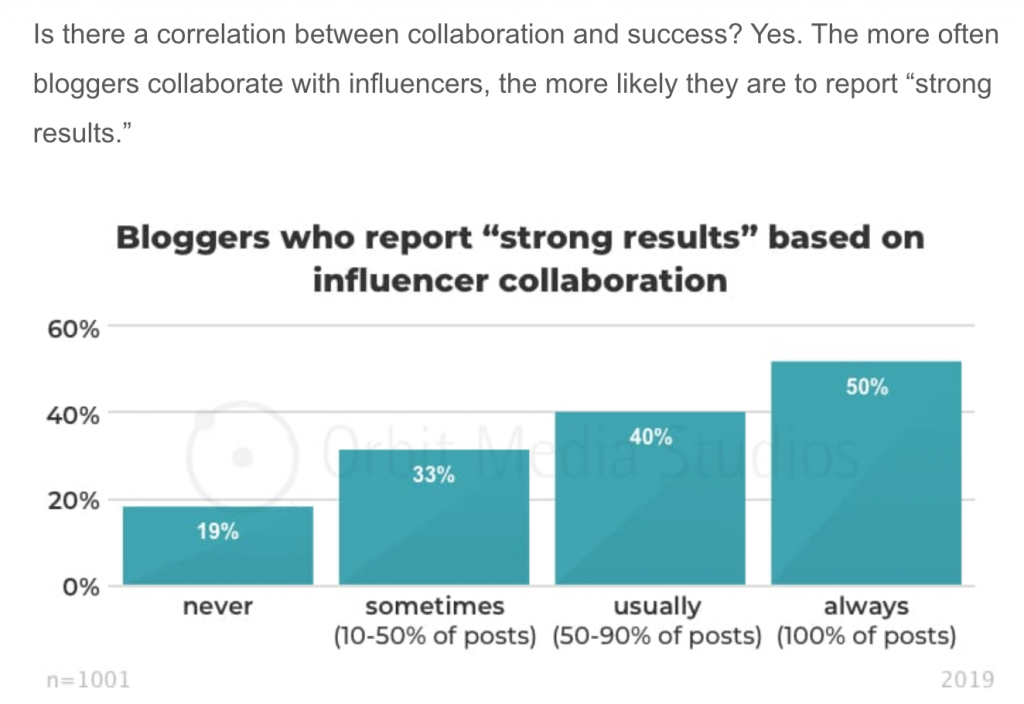
2. Turn problems into solutions
As I mentioned earlier, this was a key strategy I used for breaking through my “block”. Bringing your audience into your story by recognizing their challenges and how you can make their lives better is always the goal. The key is to solve that problem by providing value and not just a product. Marketing Examples puts it this way: People don’t want a better toothbrush. They want a brighter smile.
3. Give it the time it deserves
While I only had 48 hours to the CBC deadline, I pretty much spent all of that (with just a wee bit of sleep) writing. I don’t recommend this. I do advocate giving anything you are writing, especially when you’re looking for conversions or sales, the time it deserves. The Orbit survey shows that the average blog post takes almost four hours to write and that bloggers are seeing better results when they spend more vs. less time writing. This time isn’t just about the writing but also taking the time to do the research (see below) as well as keyword searches to improve SEO. The Orbit Survey showed that keyword searches pay off, stating “The more the blogger researches keywords, the more likely they are to report success.
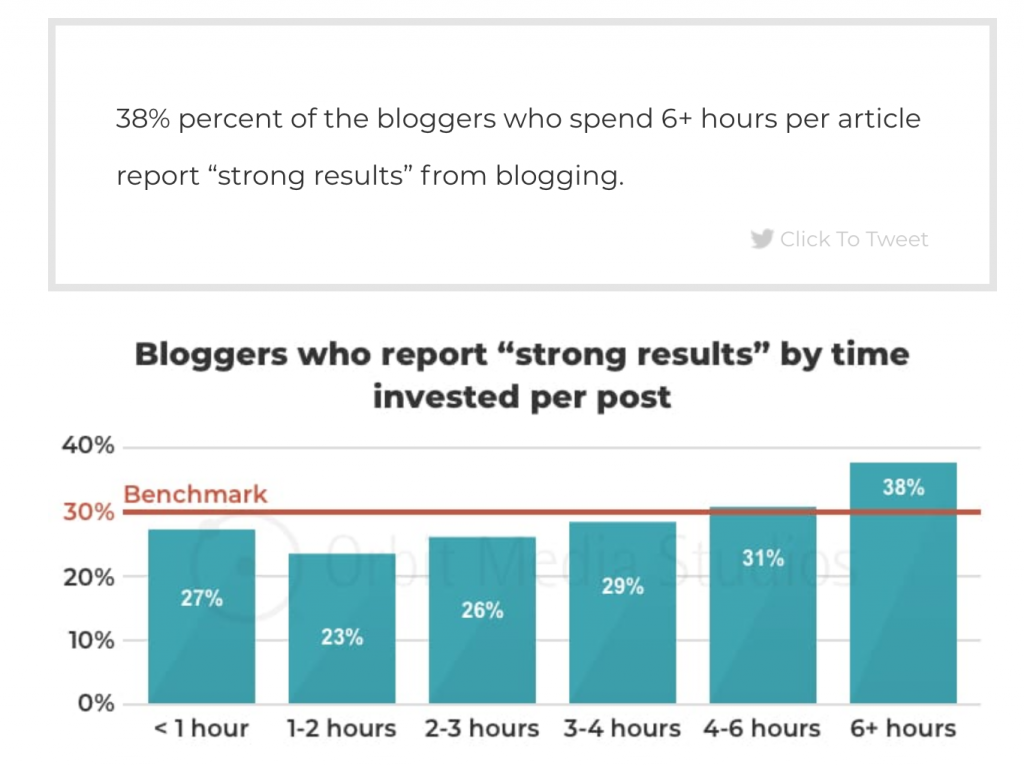
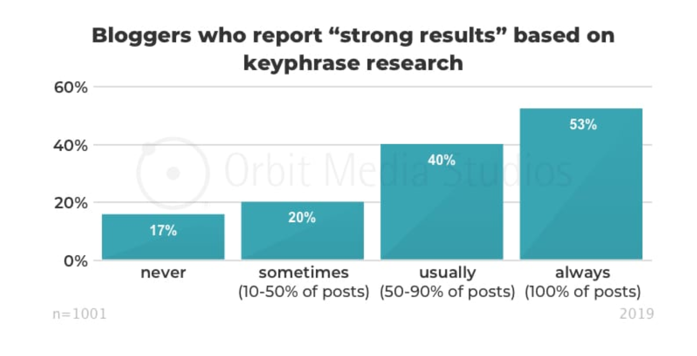
4. Go big or go home
I decided to put it all out there for the CBC fiction piece and came in just under the 2,500 maximum word count. Interestingly, the Orbit survey reveals that the days of short form content seem to be gone and that bloggers are seeing better results with longer posts. Common sense would say this is content that is giving readers more of what they want – well thought out solutions to their problems that are backed up by solid research.
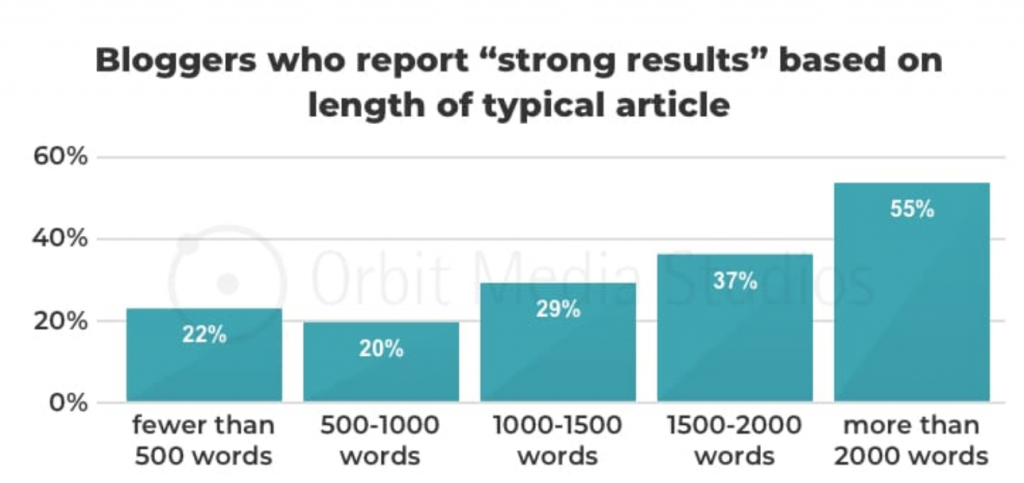
5. Make it stick
My project had to be fiction so I was somewhat limited, but I focused on writing it in a particular style – literary – that seems to be what wins the CBC writing contests. For the newer business blogger, this gets a little trickier as you may not have the capacity yet to create guides and eBooks, infographics or research. But most of you have some expertise that can be leveraged into a how-to article (like this one) that still rates pretty high.
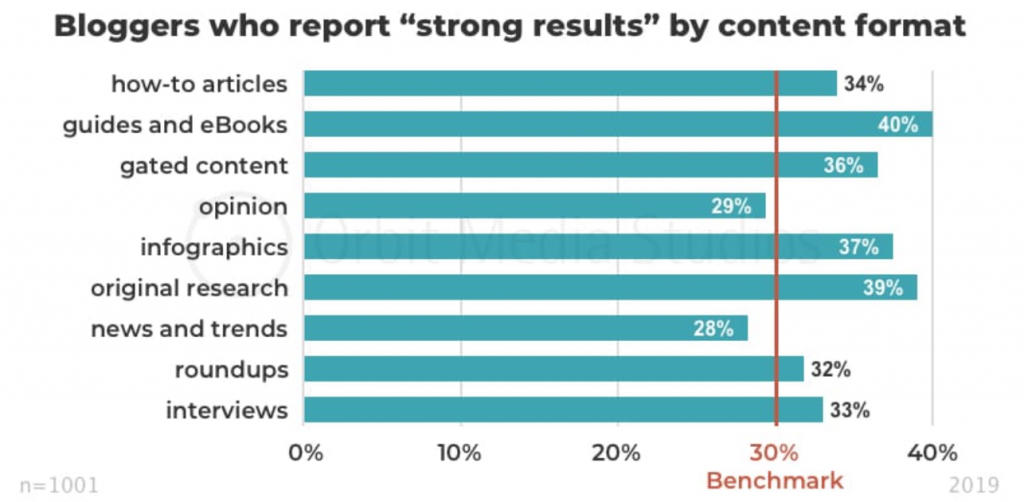
6. Picture it
Again, I wasn’t permitted to use images, video or audio for the CBC project. Instead, I used a lot of strong language to illustrate the main points in my story. You’ll want to be careful with this in business writing! The chart below shows the power of video, which is a trend that has grown over the years. Interestingly, the survey also found that while just 3% of bloggers add 10+ images per article, they are 2.5x more likely to report “strong results” than the average blogger.
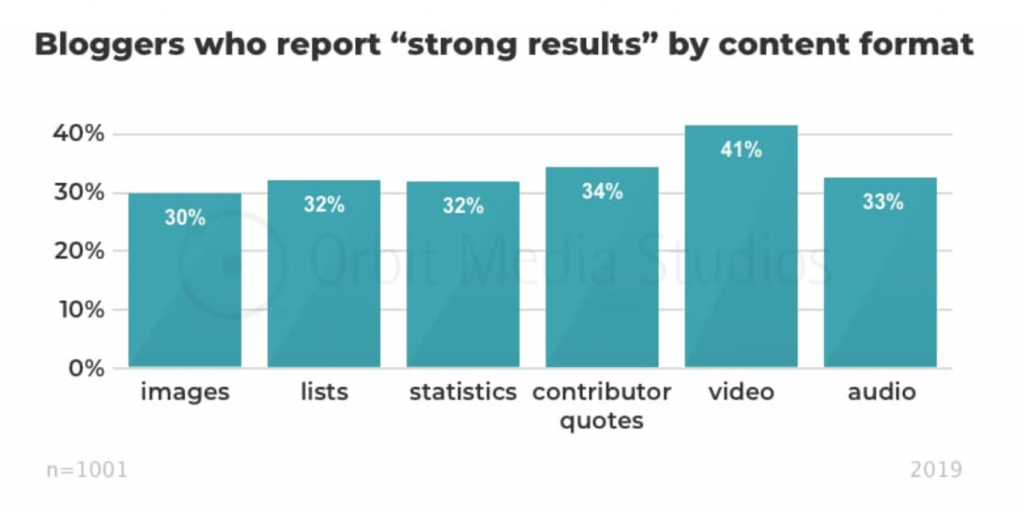
7. Know what you’re asking for
In short stories, you want to let the readers decide what they’re taking away. Not so in business writing. Be clear on what you want the reader to do but think “Call-to-Value” rather than “Call-to-Action”. This piece of advice is courtesy of Marketing Examples who share that a button to “Create Your Website” is more enticing than “Sign up now”. You get the idea. See What’s Next? below.
8. Obsess about headlines, subject lines and opening lines
This is how you draw your readers in. I spend a lot of time on this no matter what I’m writing. The Orbit survey found that writers who considered lots of different headlines for their blogs got better results. Ann Handley, Chief Content Officer, Marketing Profs, adds that you should spend as much time thinking about your first sentence: “Because the headline makes a reader click. And the first line makes them actually read the piece.”
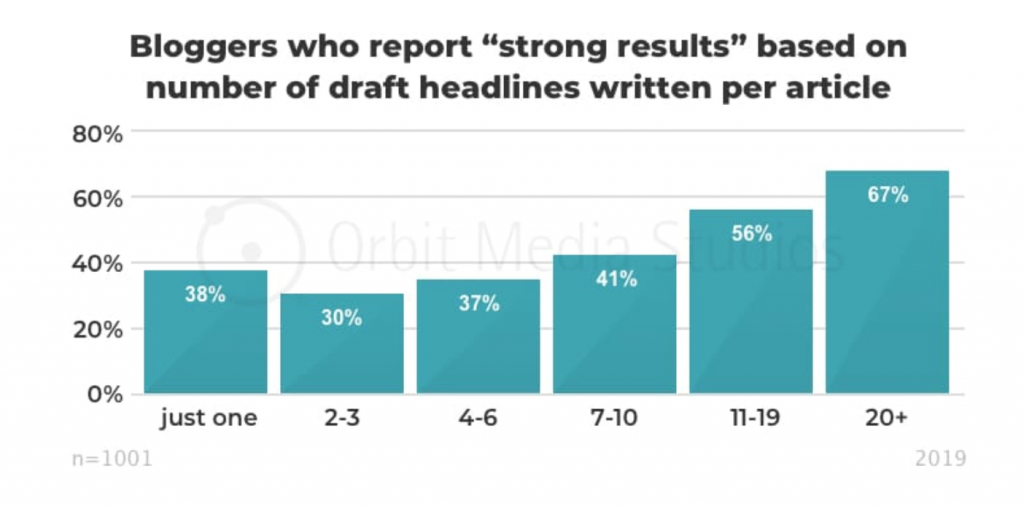
9. Get the help you need
While the short story I wrote was fiction, it was so personal that I knew I needed some other eyes on it. I was fortunate to get them and acted on the feedback I received. The Orbit survey shares that more and more bloggers are recognizing the value of this. I also have my MAC dictate out loud what I’ve written. This helps me catch repeated words and typos so my editor isn’t distracted by them. If you’re prone to typos or grammatical errors, a proofreader (who may be your editor too) is worth every penny. I can’t stress this enough. Know when you need help.
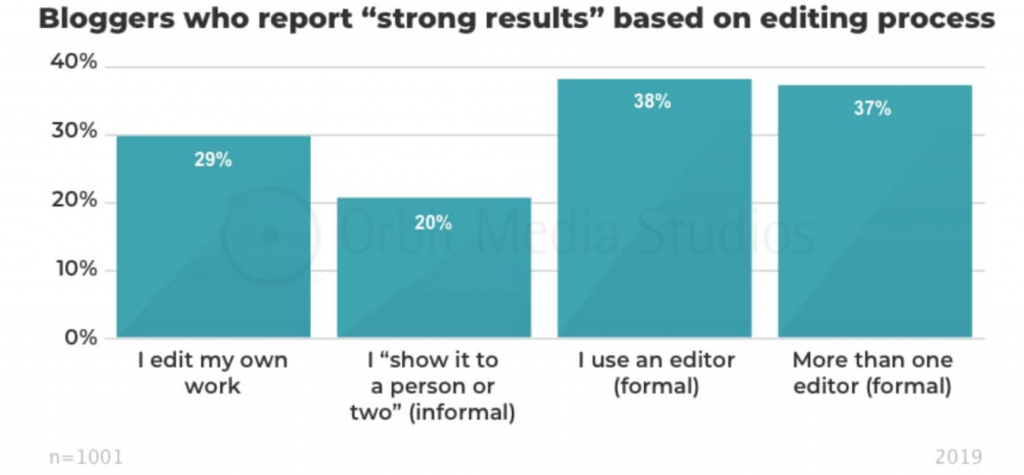
10. Let it go
Hitting submit in writing contests is excruciating. It isn’t all that different from when you hit “send” for that eNewsletter or post the link to a blog you’ve slaved over. If you’ve taken all the steps I’ve outlined above, you should be able to breathe a little easier. You’ll also need to line up your content distribution strategy, whether that’s an email campaign, organic or paid service. The chart below shows what’s working for the bloggers surveyed by Orbit Media.
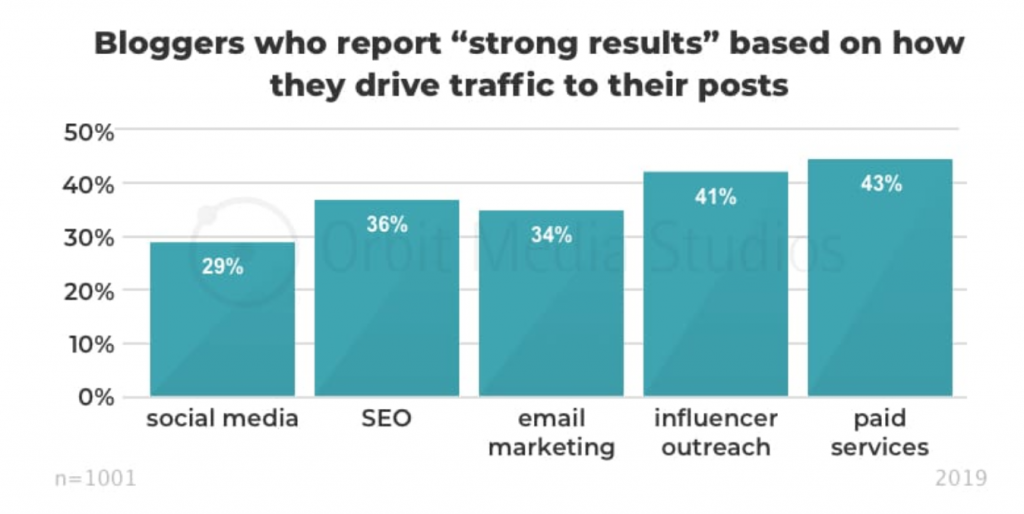
11. Measure it
Personal satisfaction and a long shot at a contest win really aren’t the kinds of measures you should be using to assess your blog’s results. Google analytics are a must and email campaign analytics such as open rates, click throughs, non-opens, etc., are also key. There are many other measures, which can include increased engagement on social media, increased traffic to your business and the real golden egg – conversions and sales. When this happens, you know you’ve done good. Keep doing it!
What’s next?
So maybe…you’re ready to get blogging? Or, maybe you now know you need some help. If that’s the case, I’m invoking points #7 and #9. Let’s chat about creating your story.
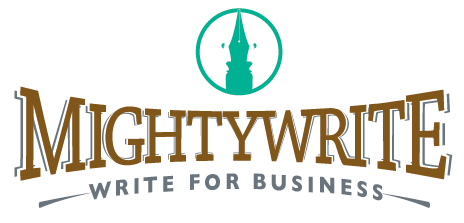

4 replies on “Pushing through the blocks to blogging”
I’m sure that’s true. Thanks!
Greet research Leanne – I don’t write but do feel your stress regarding timelines as this does happen in the visual arts as well !
Thanks Lindy. I’m glad I could help!
This is excellent, informative and convincing. Thank you so much ! It’s also very good timing to apply all of this content to a new project we may be taking on.